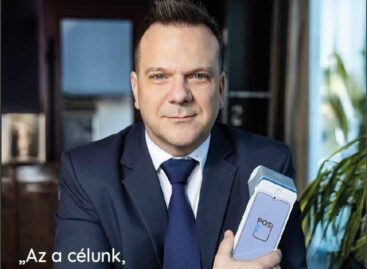You are what you wear
Just like by the interior design, the first impression of a restaurant is also influenced by the way employees are dressed – it is part of the place’s image.
This article is available for reading in Trade magazin 2024/8-9
Ideally workwear has a modern, fresh look, which suits both the business and the brand – and communicates the brand’s image. The human factor is perhaps even more important in today’s hospitality industry: workwear must be accepted by the employees, as only those who feel good about themselves can perform well and remain part of the team in the long term. It is key that the employee feels comfortable in their clothes, which they make sure to have the right style and material.
What are we wearing?

Csaba Csiki
managing director
Dresszkód
“Bragard’s product selection covers the entire HoReCa sector, but our customers are mainly looking for chef coats and trousers, plus aprons, from the restaurant and hotel world. We also have more and more buyers from confectioneries and bakeries”,
says Csaba Csiki, managing director of Dresszkód Kft.
With big purchases (for example by hotels,) price is still the deciding factor, but looks are important too. In the case of smaller purchases (1-40 items) customers tend to choose higher quality, better looking, more practical and comfortable garments made from better materials.
“We offer a wide range of clothes for chefs and waiters alike. Our portfolio includes shirts, tunics, jackets, trousers, shoes, gloves, as well as aprons, capes, bandanas, chef’s hats, and hair and beard nets”,
says Gábor Nevihostényi, managing director of Bunzl Hungary Kft.
In the hospitality industry there is also a fashion influence in workwear, e.g. slim fit clothes, but this typically occurs in the hospitality sector. In addition to classic white and black, blue, purple and grey are increasingly popular. Light colours give a sense of cleanliness and hygiene, while dark colours send the message of elegance and professionalism.

How comfortable the employee feels in his or her clothes is a key factor
Concepts and methods

Szilveszter Földvári
owner
Chef’s Uniform
“We primarily sell workwear for chefs, pastry chefs and waitresses, plus non-slip footwear and aprons. Our strength is that we do this not only online, but also in our specialist stores”,
explains Szilveszter Földvári, managing director of Chef’s Uniform.
Workwear fashion is also following the latest trends. Where it is the management that buys the clothes for the staff, the company’s essential products are popular, because price is very important due to the large number of items – for a large restaurant it is easy to run into the millions, even if it is only the basic items we are talking about. Approximately 70-80% of restaurants and hotels don’t pay for their staff’s work clothes, so employees have to buy them themselves.
According to Csaba Csiki, how long a piece of workwear can be worn depends on the intensity of use, the frequency of washing and the technique used, but the quality of a coat or a pair of trousers is still decisive. Customers who wear Bragard coats buy new ones every 1-2 years, but they also use the coats they have bought earlier. Coats that are 3-4 years old are common and even 5-6 years old coats aren’t uncommon.

Modern restaurant uniforms follow the concept of “less is more”
Colours and years

Gábor Nevihostényi
managing director
Bunzl Magyarország
Gábor Nevihostényi told:
based on Bunzl’s experience, cost-effectiveness and durability are the most important factors for domestic bar and restaurant owners when choosing workwear. Workwear made of high-quality materials usually keeps its shape and colour longer, depending on the type of use. The functionality of workwear is also a key aspect. Workwear that matches the style of the restaurant helps to maintain a professional appearance.
Szilveszter Földvári explained that the durability of work clothes also has to do with how many sets an employee has and how often they change clothes. Nowadays chefs prefer black trousers, but there is also a growing demand for patterned ones. Still, white has been the colour of cleanliness and hygiene for decades. //
Buying or renting?

Zoltán Varga
sales and marketing director
Lindström
We asked Zoltan Varga, sales and marketing director of Lindström to summarise the advantages of renting workwear.
Renting workwear has many advantages in the food industry and in HoReCa, where a hygienic and uniform appearance is essential. Main advantages include simplifying the definition of needs, as the supplier cooperates with the client to select the right products and quantities. Rental doesn’t require an upfront capital investment, only a monthly rental fee payment. Renting allows owners to react quickly to changes in the workforce, for example by providing new employees with clothing or replacing damaged garments. Lindström, can arrange for the customisation of workwear, size adjustments, logos and name labels. //
What is trendy?
Today’s trends in hospitality workwear design focus on striking a balance between style and functionality.
Contemporary minimalism: modern restaurant uniforms follow the concept of “less is more”. Culinary inspired designs: chef’s coats decorated with subtle prints reminiscent of fresh herbs or kitchen utensils .Mixing textures: this trend lends depth to the overall look. Customisation and individuality: uniforms that allow employees to express their individuality are increasingly popular. Sustainable fabrics: the use of eco-friendly fabrics such as organic cotton, bamboo and recycled polyester. Digitalisation: although the incorporation of digital devices into uniforms may seem a bit extreme, it is becoming more common (embedded QR codes, temperature control on smart fabrics, etc.). //
Related news
The HORECA sector joins forces with Alimentaria+Hostelco to mark the future of hospitality
🎧 Hallgasd a cikket: Lejátszás Szünet Folytatás Leállítás Nyelv: Auto…
Read more >More from less – this is how the world is cooking in 2025
🎧 Hallgasd a cikket: Lejátszás Szünet Folytatás Leállítás Nyelv: Auto…
Read more >THE LATEST ISSUE OF TRADE MAGAZINE IS OUT NOW!
🎧 Hallgasd a cikket: Lejátszás Szünet Folytatás Leállítás Nyelv: Auto…
Read more >Related news
Experience, timing, awareness: a new travel logic is emerging towards 2026
🎧 Hallgasd a cikket: Lejátszás Szünet Folytatás Leállítás Nyelv: Auto…
Read more >Online Travel Expo introduced as a new digital professional platform
🎧 Hallgasd a cikket: Lejátszás Szünet Folytatás Leállítás Nyelv: Auto…
Read more >Tipping rate approaches 10% in Hungary
🎧 Hallgasd a cikket: Lejátszás Szünet Folytatás Leállítás Nyelv: Auto…
Read more >






